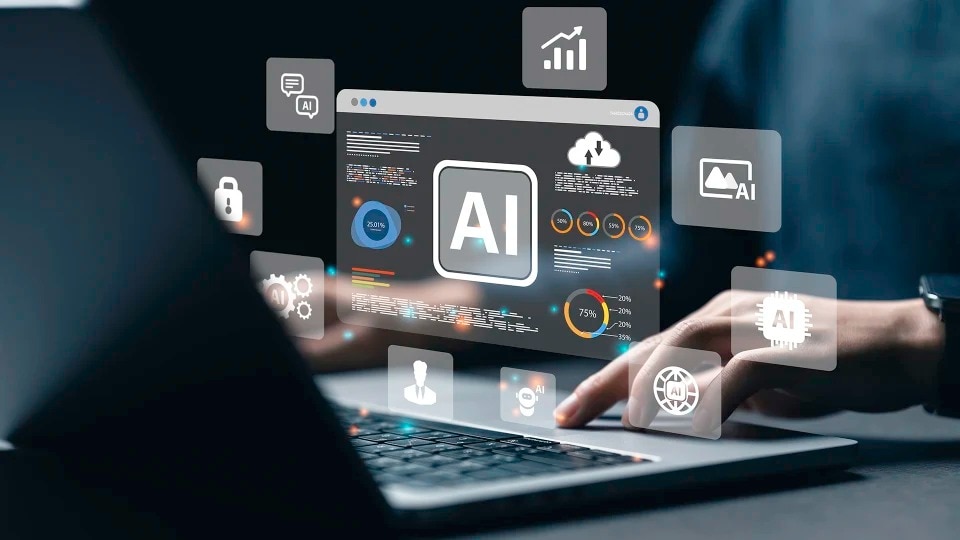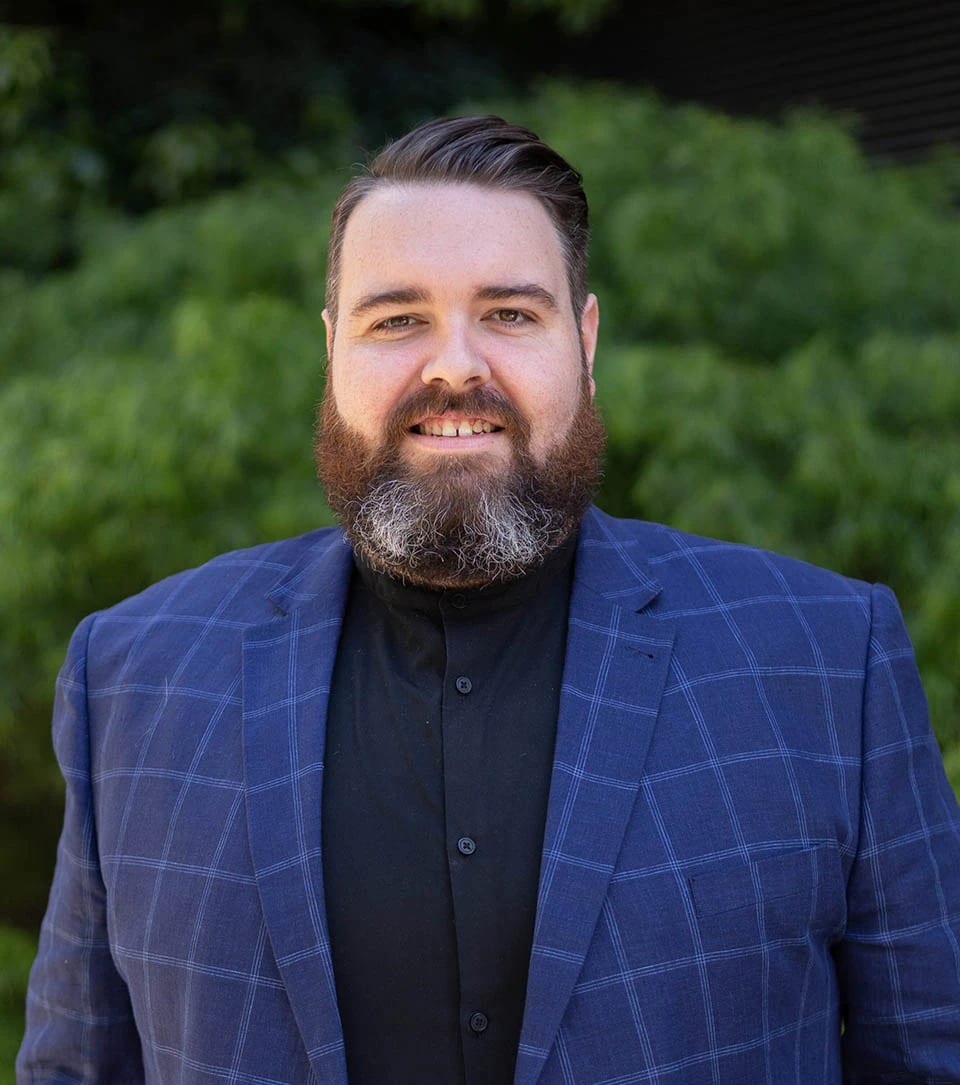& Construction

Integrated BIM tools, including Revit, AutoCAD, and Civil 3D
& Manufacturing

Professional CAD/CAM tools built on Inventor and AutoCAD
International engineering consulting firm Aurecon is seven years into its digital transformation journey, and now it’s ready for the next frontier: bringing generative artificial intelligence (AI) into its design automation processes.
Aurecon has already improved its capabilities for large-scale projects across Australia, New Zealand, and Asia, using a range of digital strategies that include software development, automation, and computation design. The company's projects include the Dau Tieng 1 and 2 Solar Power Plant, Southeast Asia’s largest solar power plant, and Murdoch University’s Boola Katitjin center, Western Australia’s first mass-engineered timber building.
In the past year, digital transformation has reached a tipping point for businesses around the world. The 2024 State of Design & Make report (US Site), Autodesk’s global study of business leaders in the Design and Make industries, reports that 64% of leaders now say their organizations are digitally mature. It’s a dramatic shift from the previous year, when just 38% ranked their companies as digitally mature.
These businesses are seeing the positive impact of their digitalization efforts and are continuing to invest to keep up with their peers. In the architecture, engineering, construction, and operations (AECO) (US Site) sector, this can mean companies have invested in building information modeling (BIM) (US Site) technologies, digital project delivery (US Site), or cloud services and platforms (US Site) such as Autodesk Construction Cloud.
Aurecon performed civil and structural engineering, pedestrian modeling, traffic audits, and robotics engineering for Western Australia’s first mass-engineered timber building, the Boola Katitjin center at Murdoch University’s Perth campus. Image courtesy of Aurecon.
For companies that achieve digital maturity, the benefits are significant. The State of Design & Make report found that organizations that invest in digital transformation are more competitive in their industries, have more productive employees, and perform better overall compared to companies that have lower levels of digital investment.
Dave Mackenzie, Aurecon’s managing principal, digital, leads the team that drives the company’s digital strategy. The team’s remit includes software development; automation; computation design; and, more recently, generative AI.
To establish the path for transformation, “We have organization-wide systemic key performance indicators to measure the business,” Mackenzie says. “These have been around digital skills and standards that we’re rolling out and the adoption of digital platforms. We’re saying 100% of our people have to have digital skills. That started at 50% and went to 100% and includes our enterprise team, as well.”
It’s essential to build employees’ digital skills to fully achieve the benefits of digital transformation, especially in the competitive AECO space. State of Design & Make respondents say that AI, digital design, and digital project management skills (US Site) will be in high demand as AECO companies try to gain a competitive edge through emerging technology.
Building employees’ digital skills is a critical step in reaping the benefits of digital transformation.
Maximizing the benefits of these skills requires continuous improvement. “When we saw where we were at and where we need to head, that drove continued transformation—and, in fact, accelerated it,” Mackenzie says.
What began as organization-wide targets around digital skills shifted to measuring digital maturity at a practice level across the entire business.
“We’ve developed a digital maturity framework with six or seven key specializations that we identified as important to our business,” he says. “Each part of that framework is connected back to client value.” The work has paid off. “Within particular domains, we stopped just talking about digital, and made that transition,” Mackenzie says. “As we reach the top of that digital maturity framework, these ways of working become fully embedded and institutionalized in our business.”
Aurecon prioritizes a systems approach, making sure the company has connected data and a common way of working with, talking about, and managing it. “The information in the data is where the value is—it’s what our clients pay us to produce,” he says. “We produce an information deliverable, be it a design or a report or whatever.”
The next step is implementing the latest technology to create new business models and new ways of working. Aurecon business leaders use status reports based on the maturity framework to make technology investment decisions that can unlock opportunities—for example, by introducing advanced automation both internally and in client solutions. “That’s how we get good buy-in from the business to accelerate change,” Mackenzie says.
Aurecon revises its organizational strategy every few years, growing more focused over the past year. “Our strategy this time is much narrower, and we’ve made a handful of real delivery decisions,” Mackenzie says, including one on delivery efficiency and another on automation. “We also made a strategic decision around generative AI and how we can introduce that technology into design automation.”
As the company evolves as a digitally mature practice, “It’s a confluence of technology,” Mackenzie says. “But more importantly, it’s a confluence of digital skills that work together. If we get this right, and we have a systemic solution around digital maturity, we should move up the maturity ladder to become a digitally competitive organization.”
Aurecon is investing heavily in AI, incorporating machine learning and large language models to empower employees in its design processes.
According to the 2024 State of Design & Make report, many organizations are making meaningful progress in their adoption of AI (US Site). Seventy-eight percent of leaders say AI will enhance their business, and 66% say it will be “essential across the board” within two to three years.
Aurecon is ahead of the curve, having made a strategic decision six years ago to set up a machine learning collaboration. AI has particular value for engineering firms because the discipline is information-dense. “It’s different reports, different borehole graphics, et cetera—you have all that information, which has to come together so you can make a design decision,” Mackenzie says. “We’re using AI to aid our people and amplify their ability to make decisions on a short horizon.”
The company would also like to bring generative AI into its design processes and is starting to use large language models as the orchestration layer for design processes. “That’s about tightening up an iteration cycle,” Mackenzie says. “We might go from a weeklong cycle to a day or even a few minutes. That’s a real disruptive transformation that could affect us all.”
Aurecon’s digital transformation has also supported the company’s commitment to sustainability, which includes participation in the United Nations Global Compact. Among its environmental aims are reaching net zero in operations by 2025, electrifying its fleet of cars, minimizing air travel, using financing arrangements with green loans, and investing in green projects.
“We have a position in the market to help our clients get to net zero (US Site), to help on the energy transition and climate transition,” Mackenzie says. “It’s choosing to lead rather than follow. Let’s lead on the initiatives that we develop. Let’s commit to targets and report on those and make sure we deliver on them.
“Climate change is going to impact all of us,” he continues. “The motivation for sustainability goes back to our purpose: bringing ideas to life, living a legacy, and improving the communities that we live in. It has translated into business for us—we see the commercial value in it, as well.”
As Aurecon progresses in its digital transformation journey, “The greatest challenge is navigating the pace of change,” Mackenzie says. “We’re generally quite good at it, but seven years on the path, I see a bit more change fatigue in the business.”
His team focuses on making sure the organization has enough agility to move with the change—to decide when to lean in and lead the market, when to follow, and how to manage the timing and risks around adopting new initiatives.
—Dave Mackenzie, Managing Principal, Digital, Aurecon
Dave Mackenzie leads the team that drives Aurecon's digital strategy.
Another challenge of digital transformation is finding great talent. “There’s a stack of engineering work to be done and not enough engineers, especially ones with real domain expertise,” Mackenzie says. “How do we grow the talent pool and mentor people to develop into really great engineers?”
Outreach to the younger generation of workers is critical. “We’re at a unique moment in time where the problems that engineering firms are trying to solve—climate change and the energy transition—are highly aligned to the values of young people,” he says. “I think we need to really capitalize on that: If you want to solve these really challenging problems, then come and be an engineer.”
Business leaders are far more optimistic (US Site) about their companies’ resilience and performance, according to the 2024 State of Design & Make report.
Aurecon shares this positive outlook. “We’ve been busy, and we’ve had a good year,” Mackenzie says. “We’ve been on this transformation journey for many years talking about restructuring our data. A lot of the ‘why’ around that has actually come to life over the past 12 months. That’s energized the business—it’s really a Trojan Horse for driving a stack of other change.
“We also see client digital maturity improving quite quickly in various markets for us,” he continues. “At a minimum, we have to meet the market; ideally, we’re 20% in front of the market. That’s the client value piece. Getting that right is a real enabler for driving transformation at scale.”
And in the past year, the company hit all of its key performance indicators. “There was a sentiment that we’ve made a tremendous amount of change, and now it is really about going into a continuous-improvement mindset,” Mackenzie says.
Shawn Radcliffe is an Ontario, Canada–based freelance journalist and yoga teacher, specializing in writing stories about health, medicine, science, architecture, engineering, and construction, as well as yoga and meditation. Reach him at ShawnRadcliffe.com.





